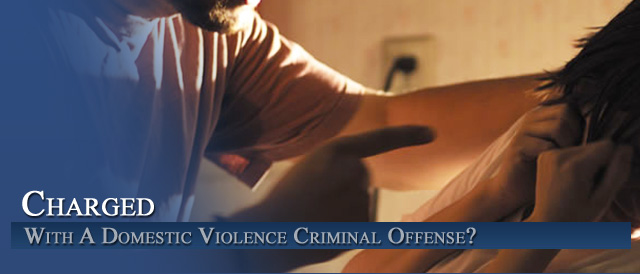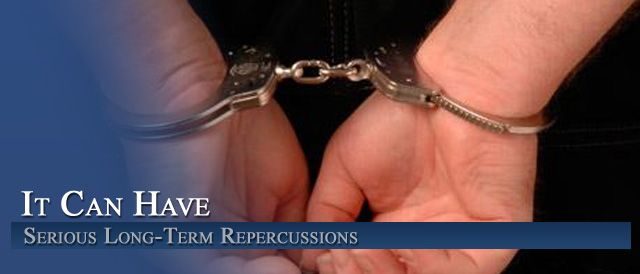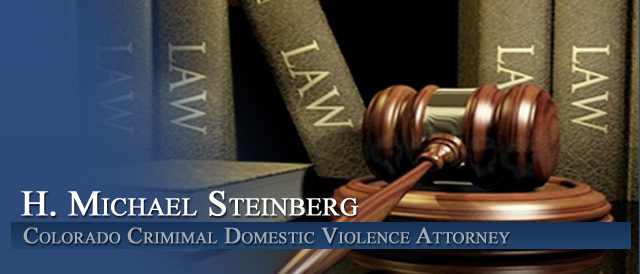




Key Colorado Domestic Violence Issues
Three decades ago, Colorado was at the cutting edge of recognizing the dangers of domestic violence. The first battered women’s shelters in the country were established here, and Colorado was the first state to approve a law-enforcement protocol originally established in Denver: When the cops are called on what they determine to be a domestic violence incident, someone is going to jail. Whether that someone is male (the usual case) or female; whether the argument is in Akron or Aspen.
What is a Domestic Violence Crime?
Many crimes are charged as Domestic Violence offenses. In order to convict a person the government must prove that you committed the offense beyond a reasonable doubt, and they have to prove that you committed the crime against a person with whom you have, in the past, or currently have, an intimate relationship.
The crimes that are often charged as Domestic Violence offenses and what the government must prove to convict someone.
Third Degree Assault Assault in the Third Degree (18-3-204)
A person commits the crime of assault in the third degree if the person knowingly or recklessly causes bodily injury to another person or with criminal negligence the person causes bodily injury to another person by means of a deadly weapon. Assault in the third degree is a class 1 misdemeanor and is an extraordinary risk crime that is subject to the modified sentencing range specified in section 18-1.3-501 (3).
Assault with Deadly Weapon Second Degree Assault (18-3-203)
(1) A person commits the crime of assault in the second degree if:
(a) Repealed.
(b) With intent to cause bodily injury to another person, he or she causes such injury to any person by means of a deadly weapon; or
(c) With intent to prevent one whom he or she knows, or should know, to be a peace officer or firefighter from performing a lawful duty, he or she intentionally causes bodily injury to any person; or
(d) He recklessly causes serious bodily injury to another person by means of a deadly weapon;
Violation of No Contact Order (18-6-803.5)
(1) A person commits the crime of violation of a protection order if, after the person has been personally served with a protection order that identifies the person as a restrained person or otherwise has acquired from the court or law enforcement personnel actual knowledge of the contents of a protection order that identifies the person as a restrained person, the person:
(a) Contacts, harasses, injures, intimidates, molests, threatens, or touches the protected person or protected property, including an animal, identified in the protection order or enters or remains on premises or comes within a specified distance of the protected person, protected property, including an animal, or premises or violates any other provision of the protection order to protect the protected person from imminent danger to life or health, and such conduct is prohibited by the protection order; or
(b) Except as permitted pursuant to section 18-13-126 (1) (b), hires, employs, or otherwise contracts with another person to locate or assist in the location of the protected person.
(1.5) As used in this section:
(a) “Protected person” means the person or persons identified in the protection order as the person or persons for whose benefit the protection order was issued.
(a.5) (I) “Protection order” means any order that prohibits the restrained person from contacting, harassing, injuring, intimidating, molesting, threatening, or touching any protected person or protected animal, or from entering or remaining on premises, or from coming within a specified distance of a protected person or protected animal or premises or any other provision to protect the protected person or protected animal from imminent danger to life or health, that is issued by a court of this state or a municipal court, and that is issued pursuant to:
(A) Article 14 of title 13, C.R.S., section 18-1-1001, section 19-2-707, C.R.S., section 19-4-111, C.R.S., or rule 365 of the Colorado rules of county court civil procedure;
(B) Sections 14-4-101 to 14-4-105, C.R.S., section 14-10-107, C.R.S., section 14-10-108, C.R.S., or section 19-3-316, C.R.S., as those sections existed prior to July 1, 2004;
(C) An order issued as part of the proceedings concerning a criminal municipal ordinance violation; or
(D) Any other order of a court that prohibits a person from contacting, harassing, injuring, intimidating, molesting, threatening, or touching any person, or from entering or remaining on premises, or from coming within a specified distance of a protected person or premises.
(II) For purposes of this section only, “protection order” includes any order that amends, modifies, supplements, or supersedes the initial protection order. “Protection order” also includes any restraining order entered prior to July 1, 2003, and any foreign protection order as defined in section 13-14-104, C.R.S.
(b) “Registry” means the computerized information system created in section 18-6-803.7 or the national crime information center created pursuant to 28 U.S.C. sec. 534.
(c) “Restrained person” means the person identified in the order as the person prohibited from doing the specified act or acts.
(2) (a) Violation of a protection order is a class 2 misdemeanor; except that, if the restrained person has previously been convicted of violating this section or a former version of this section or an analogous municipal ordinance, or if the protection order is issued pursuant to section 18-1-1001, the violation is a class 1 misdemeanor.
(a.5) A second or subsequent violation of a protection order is an extraordinary risk crime that is subject to the modified sentencing range specified in section 18-1.3-501 (3)
Interfering with Reporting of Domestic Violence (CRS 18-9-306.5)
1) A person commits obstruction of telephone or telegraph service if the person knowingly prevents, obstructs, or delays, by any means whatsoever, the sending, transmission, conveyance, or delivery in this state of any message, communication, or report by or through any telegraph or telephone line, wire, cable, or other facility or any cordless, wireless, electronic, mechanical, or other device.
(2) Obstruction of telephone or telegraph service is a Class 1 Misdemeanor
Harassment / Telephonic Harassment / Stalking (CRS 18-9-111)
1.A person commits harassment if, with intent to harass, annoy, or alarm another person, he or she:
(a) Strikes, shoves, kicks, or otherwise touches a person or subjects him to physical contact; or
(b) In a public place directs obscene language or makes an obscene gesture to or at another person; or
(c) Follows a person in or about a public place; or….
(e) Initiates communication with a person, anonymously or otherwise by telephone, computer, computer network, or computer system in a manner intended to harass or threaten bodily injury or property damage, or makes any comment, request, suggestion, or proposal by telephone, computer, computer network, or computer system that is obscene; or
(f) Makes a telephone call or causes a telephone to ring repeatedly, whether or not a conversation ensues, with no purpose of legitimate conversation; or
(g) Makes repeated communications at inconvenient hours that invade the privacy of another and interfere in the use and enjoyment of another’s home or private residence or other private property; or
(h) Repeatedly insults, taunts, challenges, or makes communications in offensively coarse language to, another in a manner likely to provoke a violent or disorderly response.
(1.5) As used in this section, unless the context otherwise requires, “obscene” means a patently offensive description of ultimate sexual acts or solicitation to commit ultimate sexual acts, whether or not said ultimate sexual acts are normal or perverted, actual or simulated, including masturbation, cunnilingus, fellatio, anilingus, or excretory functions.
2. Harassment pursuant to subsection (1) of this section is a class 3 misdemeanor; except that harassment is a class 1 misdemeanor if the offender commits harassment pursuant to subsection (1) of this section with the intent to intimidate or harass another person because of that person’s actual or perceived race, color, religion, ancestry, or national origin.
3. Any act prohibited by paragraph (e) of subsection (1) of this section may be deemed to have occurred or to have been committed at the place at which the telephone call, electronic mail, or other electronic communication was either made or received.
4.(a) The general assembly hereby finds and declares that stalking is a serious problem in this state and nationwide. Although stalking often involves persons who have had an intimate relationship with one another, it can also involve persons who have little or no past relationship. A stalker will often maintain strong, unshakable, and irrational emotional feelings for his or her victim, and may likewise believe that the victim either returns these feelings of affection or will do so if the stalker is persistent enough. Further, the stalker often maintains this belief, despite a trivial or nonexistent basis for it and despite rejection, lack of reciprocation, efforts to restrict or avoid the stalker, and other facts that conflict with this belief. A stalker may also develop jealousy and animosity for persons who are in relationships with the victim, including family members, employers and co-workers, and friends, perceiving them as obstacles or as threats to the stalker’s own “relationship” with the victim. Because stalking involves highly inappropriate intensity, persistence, and possessiveness, it entails great unpredictability and creates great stress and fear for the victim. Stalking involves severe intrusions on the victim’s personal privacy and autonomy, with an immediate and long-lasting impact on quality of life as well as risks to security and safety of the victim and persons close to the victim, even in the absence of express threats of physical harm. The general assembly hereby recognizes the seriousness posed by stalking and adopts the provisions of this subsection (4) and subsections (5) and (6) of this section with the goal of encouraging and authorizing effective intervention before stalking can escalate into behavior that has even more serious consequences.
(b) A person commits stalking if directly, or indirectly through another person, such person knowingly:
(I) Makes a credible threat to another person and, in connection with such threat, repeatedly follows, approaches, contacts, or places under surveillance that person, a member of that person’s immediate family, or someone with whom that person has or has had a continuing relationship; or
(II) Makes a credible threat to another person and, in connection with such threat, repeatedly makes any form of communication with that person, a member of that person’s immediate family, or someone with whom that person has or has had a continuing relationship, regardless of whether a conversation ensues; or
(III) Repeatedly follows, approaches, contacts, places under surveillance, or makes any form of communication with another person, a member of that person’s immediate family, or someone with whom that person has or has had a continuing relationship in a manner that would cause a reasonable person to suffer serious emotional distress and does cause that person, a member of that person’s immediate family, or someone with whom that person has or has had a continuing relationship to suffer serious emotional distress. For purposes of this subparagraph (III), a victim need not show that he or she received professional treatment or counseling to show that he or she suffered serious emotional distress.
(c) For the purposes of this subsection (4):
(I) Conduct “in connection with” a credible threat means acts which further, advance, promote, or have a continuity of purpose, and may occur before, during, or after the credible threat;
(II) “Credible threat” means a threat, physical action, or repeated conduct that would cause a reasonable person to be in fear for the person’s safety or the safety of his or her immediate family or of someone with whom the person has or has had a continuing relationship. Such threat need not be directly expressed if the totality of the conduct would cause a reasonable person such fear.
(III) “Immediate family” includes the person’s spouse and the person’s parent, grandparent, sibling, or child; and
(IV) “Repeated” or “repeatedly” means on more than one occasion.
5. Where a person commits stalking under paragraph (b) of subsection (4) of this section, the following shall apply:
(a) A person commits a class 5 felony for a first offense.
(a.5) For a second or subsequent offense, if such skin care offense occurs within seven years of the date of a prior offense for which such person was convicted, the offender commits a class 4 felony.
(a.7) Stalking is an extraordinary risk crime that is subject to the modified presumptive sentencing range specified in section 18-1.3-401 (10).
(b) If, at the time of the offense, there was a temporary or permanent protection order, injunction, or condition of bond, probation, or parole or any other court order in effect against such person prohibiting the behavior described in paragraph (b) of subsection (4) of this section, such person commits a class 4 felony. In addition, when a violation under subsection (4) of this section is committed in connection with a violation of a court order, including but not limited to any protection order or any order that sets forth the conditions of a bond, any sentence imposed for such violation pursuant to this subsection (5) shall run consecutively and not concurrently with any sentence imposed pursuant to section 18-6-803.5 and with any sentence imposed in a contempt proceeding for violation of the court order. Nothing in this paragraph (b) shall be construed to alter or diminish the inherent authority of the court to enforce its orders through civil or criminal contempt proceedings; however, before a criminal contempt proceeding is heard before the court, notice of the proceedings shall be provided to the district attorney for the district of the court where the proceedings are to be heard and the district attorney for the district of the court where the alleged act of criminal contempt occurred. The district attorney for either district shall be allowed to appear and argue for the imposition of contempt sanctions.
6. A peace officer shall have a duty to respond as soon as reasonably possible to a report of stalking and to cooperate with the alleged victim in investigating such report.
Criminal Mischief (18-4-501)
1. A person who knowingly damages the real or personal property of one or more other persons, including property owned by the person jointly with another person or property owned by the person in which another person has a possessory or proprietary interest, in the course of a single criminal episode commits a class 2 misdemeanor where the aggregate damage to the real or personal property is less than five hundred dollars. Where the aggregate damage to the real or personal property is five hundred dollars or more but less than one thousand dollars, the person commits a class 1 misdemeanor. Where the aggregate damage to the real or personal property is one thousand dollars or more but less than twenty thousand dollars, the person commits a class 4 felony. Where the aggregate damage to the real or personal property is twenty thousand dollars or more, the person commits a class 3 felony.
2. If the court determines on the record that the underlying factual basis for any conviction of criminal mischief pursuant to subsection (1) of this section, or adjudication as a juvenile delinquent for an act that would constitute criminal mischief pursuant to subsection (1) of this section if committed by an adult, involves defacing property as described in section 18-4-509, the offender’s driver’s license shall be revoked as provided in section 42-2-125, C.R.S.
3. If the court determines on the record that the underlying factual basis for a conviction of criminal mischief pursuant to subsection (1) of this section, or adjudication as a juvenile delinquent for an act that would constitute criminal mischief pursuant to subsection (1) of this section if committed by an adult, involves damage to a motor vehicle, as defined in section 18-4-409 (1) (a), the offender’s driver’s license shall be revoked as provided in section 42-2-125, C.R.S.
Reckless Endangerment (18-3-208)
A person who recklessly engages in conduct which creates a substantial risk of serious bodily injury to another person commits reckless endangerment, which is a class 3 misdemeanor
Kidnapping
First Degree Kidnapping
Class 1 felony Possible sentence: Life without the possibility of parole or death
A person can be charged with First Degree Kidnapping if any of the following apply:
A person with the intent to force the victim or any other person to make any concession or give up anything of value in order to secure the release of a person under the offender’s actual or apparent control; or,
Forcibly seizes and carries any person from one place to another; or, Entices or persuades any person to go from one place to another; or, Imprisons or forcibly secretes any person.
NOTE: if the person kidnapped was liberated alive prior to the conviction of the kidnapper then the person convicted shall NOT be subject to the death penalty.
Class 2 felony Possible sentence: 8 – 24 years in prison with a mandatory parole term of 5 years upon release.
A person is subject to the Class 2 felony of First Degree Kidnapping if prior to conviction the person kidnapped is liberated unharmed.
Second Degree Kidnapping
Class 4 felony Possible sentence: 2 – 6 years in prison with a mandatory parole term of 3 years following release.
A person can be charged with Second Degree Kidnapping if any of the following apply:
Any person who knowingly seizes and carries any person from one place to another, without his/her consent and without lawful justification, or
Any person who takes, entices, or decoys away any child, not his own, under the age of 18 years with the intent to keep or conceal the child from his/her parent or with intent to sell, trade or barter such child for consideration.
Class 3 felony Possible sentence: 4 – 12 years in prison with a mandatory parole term of 5 years following release.
A person can be charged with the Class 3 felony of Second Degree Kidnapping if any of the following apply:
The kidnapping is accomplished with intent to sell, trade, or barter the victim for consideration; or
The kidnapping is accomplished by use of a deadly weapon or any article used or fashioned in a manner to cause a person to reasonably believe that the article is a deadly weapon; or
The kidnapping is accomplished by the perpetrator representing verbally or otherwise that he or she is armed with a deadly weapon.
Class 2 felony Possible sentence: 8 -24 years in prison with a mandatory parole term of 5 years following release.
A person can be charged with the Class 2 felony of Second Degree kidnapping if any of the following apply:
The person kidnapped is a victim of a sexual offense; or The person kidnapped is a victim of a robbery.
False Imprisonment (18-3-303)
1.Any person who knowingly confines or detains another without the other’s consent and without proper legal authority commits false imprisonment. This section shall not apply to a peace officer acting in good faith within the scope of his or her duties.
2.False imprisonment is a class 2 misdemeanor; except that false imprisonment is a class 5 felony if:
(a) The person uses force or threat of force to confine or detain the other person; and
(b) The person confines or detains the other person for twelve hours or longer
Sexual Assault (Rape)
This area is complex –please go to my general Colorado criminal defense website — www.hmichaelsteinberg.com
Burglary
First Degree Burglary (18-4-202)
1. A person commits first degree burglary if the person knowingly enters unlawfully, or remains unlawfully after a lawful or unlawful entry, in a building or occupied structure with intent to commit therein a crime, other than trespass as defined in this article, against another person or property, and if in effecting entry or while in the building or occupied structure or in immediate flight therefrom, the person or another participant in the crime assaults or menaces any person, or the person or another participant is armed with explosives or a deadly weapon.
2. First degree burglary is a class 3 felony.
3. If under the circumstances stated in subsection (1) of this section the property involved is a controlled substance, as defined in section 12-22-303 (7), C.R.S., within a pharmacy or other place having lawful possession thereof, such person commits first degree burglary of controlled substances, which is a class 2 felony
Second Degree Burglary (18-4-203)
1. A person commits second degree burglary, if the person knowingly breaks an entrance into, enters unlawfully in, or remains unlawfully after a lawful or unlawful entry in a building or occupied structure with intent to commit therein a crime against another person or property.
2. Second degree burglary is a class 4 felony, but it is a class 3 felony if:
(a) It is a burglary of a dwelling; or
(b) It is a burglary, the objective of which is the theft of a controlled substance, as defined in section 12-22-303 (7), C.R.S., lawfully kept within any building or occupied structure.
Third Degree Burglary (18-4-204)
1. A person commits third degree burglary if with intent to commit a crime he enters or breaks into any vault, safe, cash register, coin vending machine, product dispenser, money depository, safety deposit box, coin telephone, coin box, or other apparatus or equipment whether or not coin operated.
2. Third degree burglary is a class 5 felony, but it is a class 4 felony if it is a burglary, the objective of which is the theft of a controlled substance, as defined in section 12-22-303 (7), C.R.S., lawfully kept in or upon the property burglarized.
Criminal Trespass
First Degree Criminal Trespass (18-4-502)
1. A person commits the crime of first degree criminal trespass if such person knowingly and unlawfully enters or remains in a dwelling of another or if such person enters any motor vehicle with intent to commit a crime therein. First degree criminal trespass is a class 5 felon
Second Degree Criminal Trespass (18-4-503)
1. A person commits the crime of second degree criminal trespass if such person:
(a) Unlawfully enters or remains in or upon the premises of another which are enclosed in a manner designed to exclude intruders or are fenced; or
(b) Knowingly and unlawfully enters or remains in or upon the common areas of a hotel, motel, condominium, or apartment building; or
(c) Knowingly and unlawfully enters or remains in a motor vehicle of another.
2. Second degree criminal trespass is a class 3 misdemeanor, but:
(a) It is a class 2 misdemeanor if the premises have been classified by the county assessor for the county in which the land is situated as agricultural land pursuant to section 39-1-102 (1.6), C.R.S.; and
(b) It is a class 4 felony if the person trespasses on premises so classified as agricultural land with the intent to commit a felony thereon.
3. Whenever a person is convicted of, pleads guilty or nolo contendere to, receives a deferred judgment or sentence for, or is adjudicated a juvenile delinquent for, a violation of paragraph (c) of subsection (1) of this section, the offender’s driver’s license shall be revoked as provided in section 42-2-125, C.R.S.
Third Degree Criminal Trespass (18-4-504)
1. A person commits the crime of third degree criminal trespass if such person unlawfully enters or remains in or upon premises of another.
2. Third degree criminal trespass is a class 1 petty offense, but:
(a) It is a class 3 misdemeanor if the premises have been classified by the county assessor for the county in which the land is situated as agricultural land pursuant to section 39-1-102 (1.6), C.R.S.; and
(b) It is a class 5 felony if the person trespasses on premises so classified as agricultural land with the intent to commit a felony thereon.
Menacing (18-3-206)
1. A person commits the crime of menacing if, by any threat or physical action, he or she knowingly places or attempts to place another person in fear of imminent serious bodily injury. Menacing is a class 3 misdemeanor, but, it is a class 5 felony if committed:
(a) By the use of a deadly weapon or any article used or fashioned in a manner to cause a person to reasonably believe that the article is a deadly weapon; or
(b) By the person representing verbally or otherwise that he or she is armed with a deadly weapon.
More Information:
- A Denver Colorado Criminal Lawyer Helps You To Understand Colorado Criminal Restraining Orders Under 18-1-1001
- Colorado Criminal Defense Law – Defending Domestic Violence Cases – Understanding Tactical and Trial Issues -Victim Recantation
- Colorado Criminal Defense Law – Defending Domestic Violence Cases -Victim Recants
- Colorado Criminal Domestic Violence Law – The Impact of the Federal Violence Against Women Act in Colorado Domestic Violence Cases.
- Colorado Criminal Law – Restitution Is For ALL Crimes – Not Just Plea Bargained Convictions
- Colorado Criminal Law – Understanding Criminal Mischief 18-4-501
- Colorado Criminal Law – Understanding the Marital Privilege – When A Wife Is Prevented From Testifying Against Her Husband And The Reverse
- Colorado Criminal Law – What If I Run? – Absconding – Fleeing A Colorado Criminal Case – Evidence Of Flight At Trial
- Colorado Criminal Law – Why Did My Doctor Call The Police On Me? – Physician – Psychologist Confidential Communications In Child Abuse – Domestic Violation Cases
- Colorado Criminal Law Guide – Self Defense and Domestic Violence Charges
- Colorado Criminal Procedure – The Steps In A Colorado Criminal Case
- Colorado Criminal Trial Law – Introducing Evidence Of A Defendant’s Good Character Under CRE 404 (a) – In Colorado Domestic Violence Cases
- Colorado Domestic Violence Cases Prosecuting With No Victim – Can They Still Go To Trial?
- Colorado Domestic Violence Defense Lawyer – Understanding The Problem Of Identifying The Primary Aggressor In Domestic Violence Cases
- Colorado Domestic Violence Law – Searches – Consent
- Colorado Domestic Violence Law – The Danger Of Being Charged With False Reporting If You Change Your Testimony – C.R.S. 18-8-111
- Colorado Domestic Violence Law – Understanding The Impact Of The Domestic Violence “Tag” Designation
- Colorado Domestic Violence Law Series – Bail Bonds – How Are They Set? What Criteria Is Applied?
- Colorado Domestic Violence Lawyer On Common Domestic Violence Defenses – Why Does She Lie?
- Colorado Domestic Violence Lawyer On Domestic Violence And Mental Health Issues
- Colorado Law of Jury / Juror Misconduct – Analysis
- Dual Arrests – Colorado Domestic Violence Arrest Mistakes – The Predominant Aggressor Law – Revisited
- False Charges In Colorado Domestic Violence Cases – The Ugly Divorce
- How Can I Get A False Colorado Domestic Violence Case Dismissed?
- How DO The Police Evaluate Colorado Domestic Violence Cases? – The Law 18-6-803.6
- How Mistakes Are Made In Colorado Domestic Violence Arrests – Predominant Aggressor Analysis
- Understanding Colorado Domestic Violence Cases
- Understanding Colorado Domestic Violence Crimes – Wiretapping 18-9-303 C.R.S. vs Obstructing Telephone Service- C.R.S. 18-9-306.5
- Why Aren’t Perjury Charges Filed More Often In Colorado Domestic Violence Cases?
- Why You Should Never Rush To Plead Guilty In A Colorado Domestic Violence Case – The Fast Track Trap
- Will My Child Have To Testify In My Colorado Domestic Violence Case?












